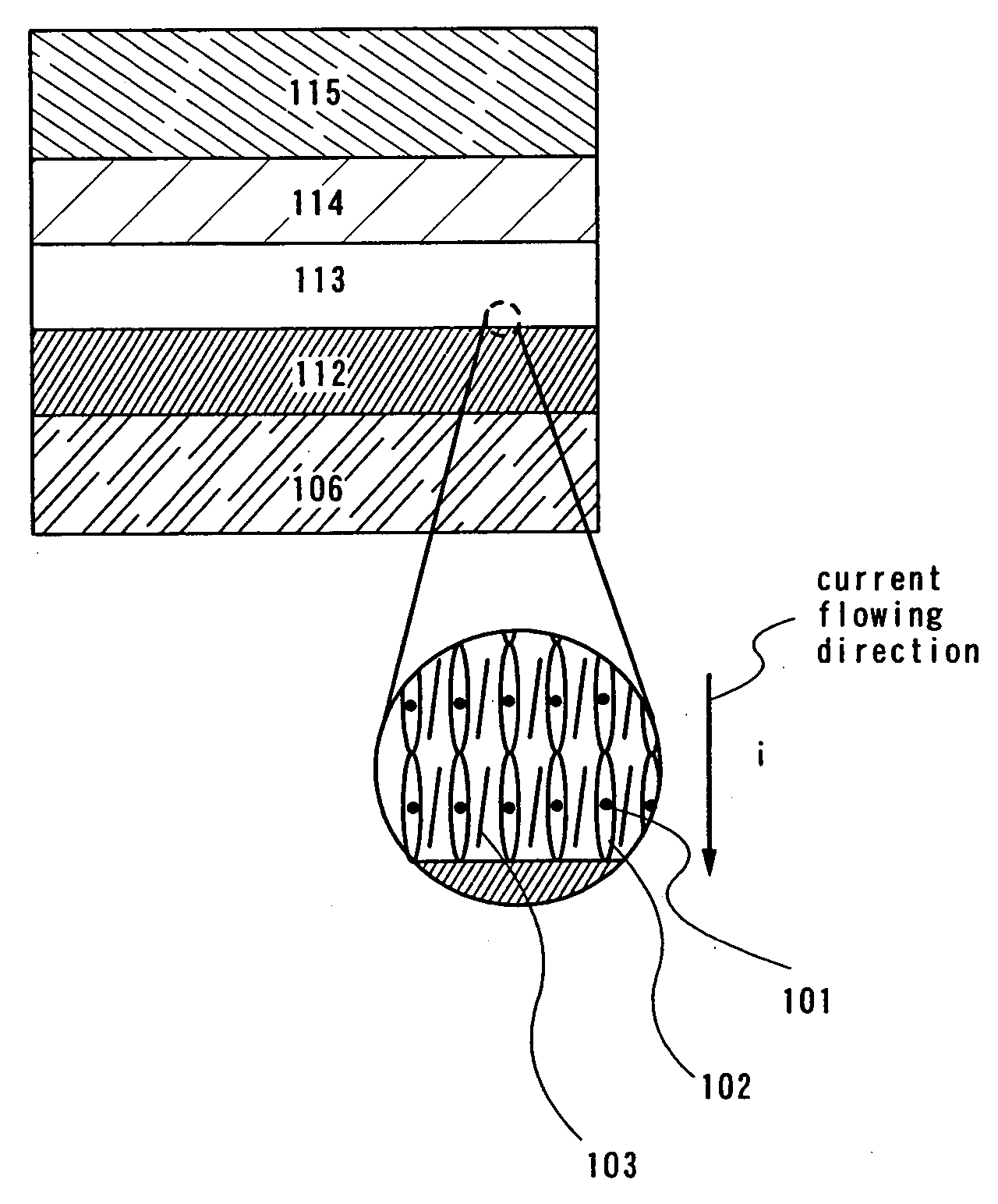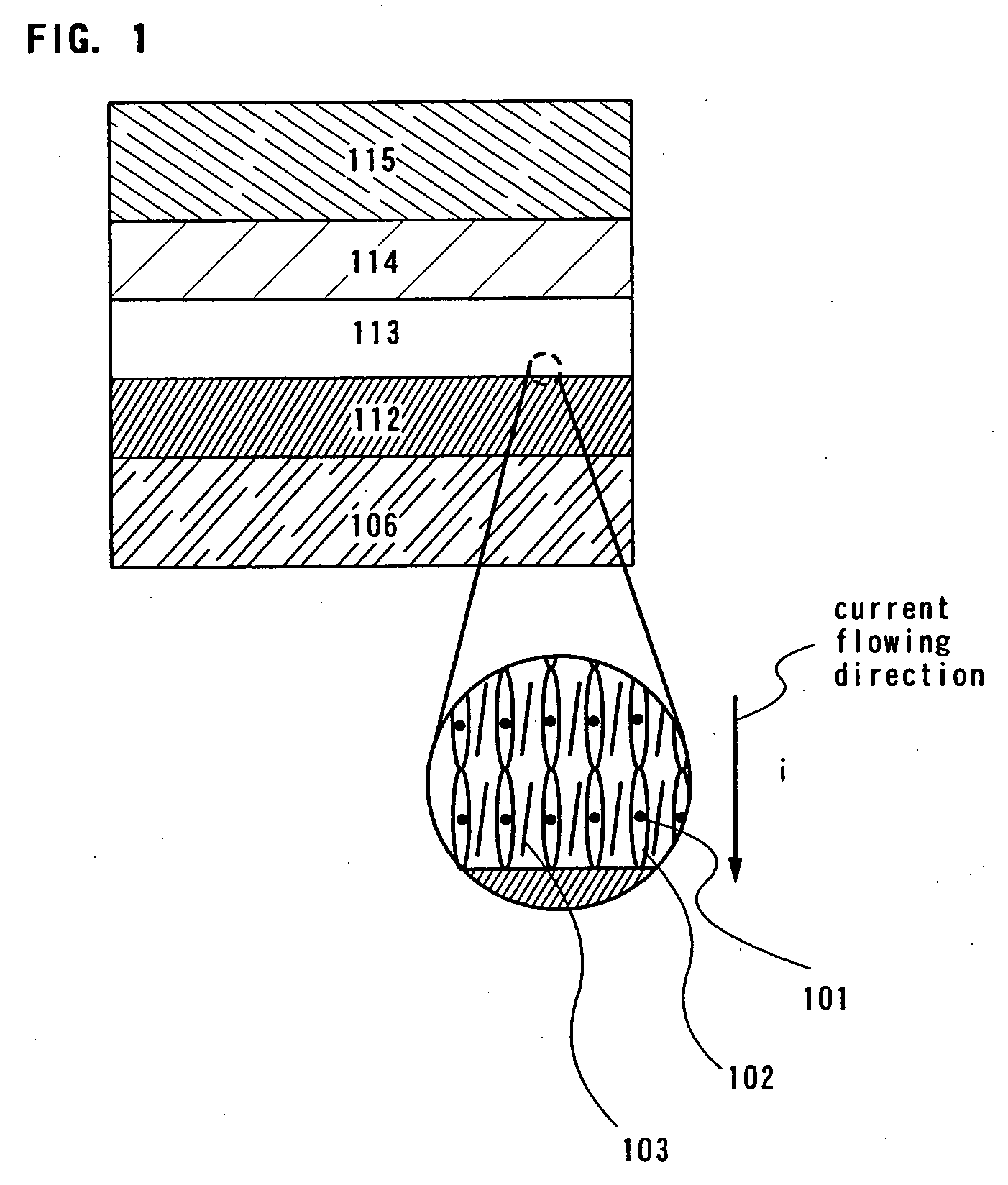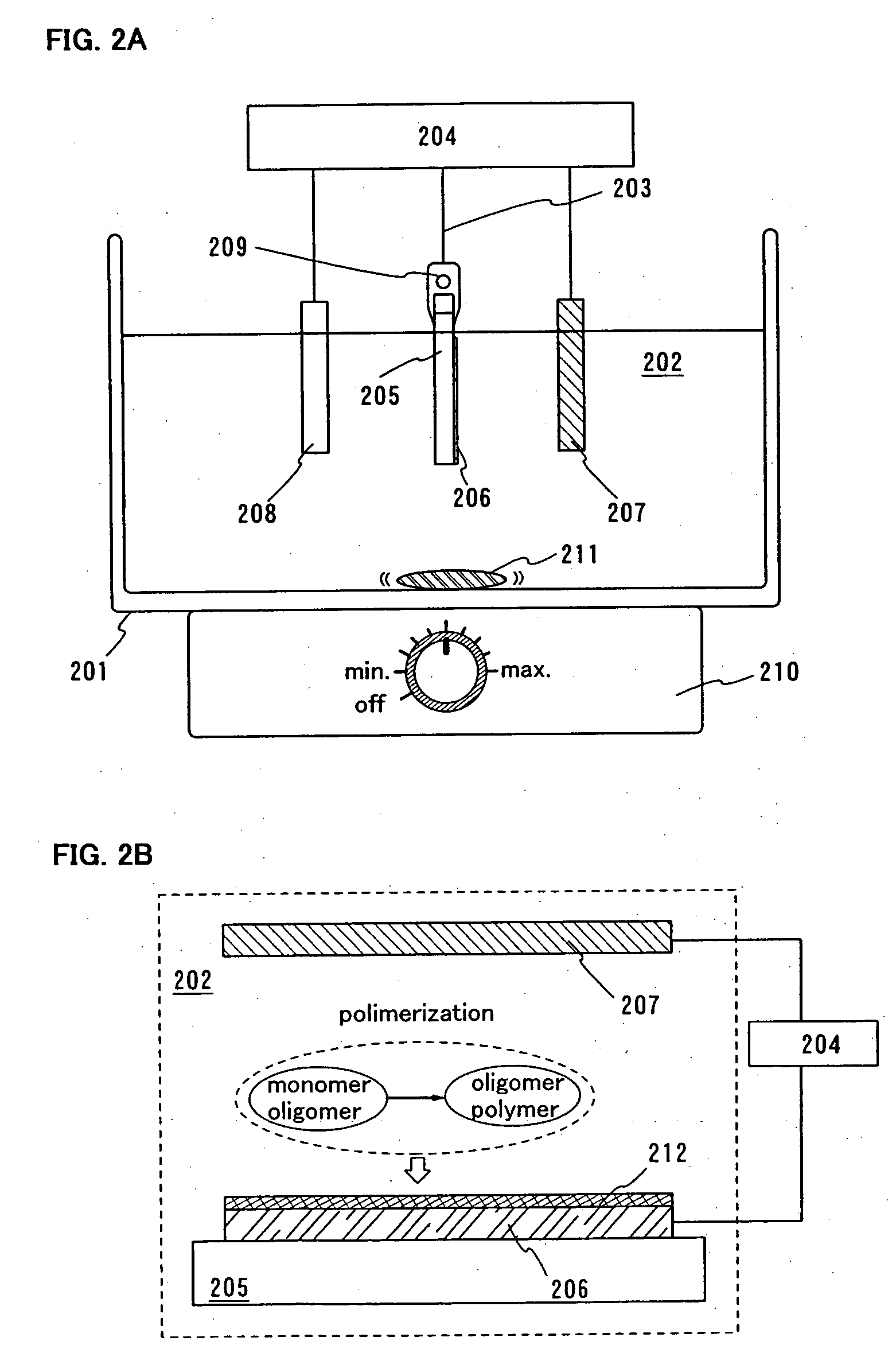Light emitting device and method for manufacturing the same
a technology of light emitting devices and light emitting elements, which is applied in the manufacture of electrode systems, electric discharge tubes/lamps, and discharge tubes luminescnet screens, etc., can solve the problems partial decrease in luminance, and generation of non-light emitting regions, so as to reduce or eliminate generation
- Summary
- Abstract
- Description
- Claims
- Application Information
AI Technical Summary
Benefits of technology
Problems solved by technology
Method used
Image
Examples
embodiment mode 1
FIG. 1 shows a schematic diagram of the present invention.
According to the invention, an electroluminescent layer is formed over an electrode (first electrode) 106 that is formed over a substrate (not shown) as shown in FIG. 1. As a material for the substrate, glass, quartz, transparent plastics, or the like can be used.
In addition, the first electrode 106 may function as either an anode or a cathode. A plurality of the first electrodes 106 may be pattern formed over the substrate. In the case of an active matrix light emitting device, a plurality of TFTs are formed over the substrate. The first electrodes 106 are electrically connected to source electrodes or drain electrodes of the TFTs and are arranged in a matrix configuration.
In addition, in the case where the first electrode 106 functions as an anode, metals, alloys, electrically conductive compounds, and mixtures of these materials, which have large work functions (at least 4.0 eV), can preferably be used as anode mater...
embodiment mode 2
An example of forming a layer containing an organic compound by electrolytic polymerization is described as an example of a method for orienting organic compound molecules. After performing surface modification on an electrode or forming an ultra thin film (not shown) in advance by application, a layer containing an organic compound is formed by electrolytic polymerization.
As shown in FIG. 2A, a reaction tank 201 holds an electrolytic solution 202, and a substrate 205 on which a first electrode 206 electrically connected to a power source 204 via a wiring 203 is formed, a counter electrode 207, and a reference electrode 208 are immersed in the electrolytic solution 202. In addition, the substrate 205 is secured by a support medium 209 that electrically connects the first electrode (anode or cathode, here, an anode) 206 to the wiring 203.
The power source 204 includes a potentiostat which is capable of applying a constant electric potential and a coulombmeter which measures an am...
embodiment mode 3
Another example of a method for orienting organic compound molecules is described here.
FIG. 3 shows a light emitting element in which layers containing an organic compound is used as electroluminescent layers 312 to 314, a first electrode 306 is used as a cathode, and a second electrode 315 is used as an anode. An organic compound molecule 302 shown in Structural Formula 5 is reacted with a surface of the first electrode containing Au, Pt, or Ag to form an Au—S bond, a Pt—S bond, or an Ag—S bond.
HS—(CH2)n—X—Ar (5)
Note that n=2 to 6, or 8. Structural Formula 6 shows an example of X in Structural Formula 5, and Structural Formula 7 shows an example of Ar. Ar here is a general abbreviation for an aryl (aromatic) group.
[Structural Formula 6]
X=nil, —CnH2n—, —O—, —S—, —N(R)—, —Si(R2)— (R═H, CnH2n, Ar) (6)
[Structural Formula 7]
Combination of X and Ar may be arbitrary. In addition, Structural Formula 5 may not include X.
Solution including these materia...
PUM
| Property | Measurement | Unit |
|---|---|---|
| work functions | aaaaa | aaaaa |
| work functions | aaaaa | aaaaa |
| thickness | aaaaa | aaaaa |
Abstract
Description
Claims
Application Information
 Login to View More
Login to View More - R&D
- Intellectual Property
- Life Sciences
- Materials
- Tech Scout
- Unparalleled Data Quality
- Higher Quality Content
- 60% Fewer Hallucinations
Browse by: Latest US Patents, China's latest patents, Technical Efficacy Thesaurus, Application Domain, Technology Topic, Popular Technical Reports.
© 2025 PatSnap. All rights reserved.Legal|Privacy policy|Modern Slavery Act Transparency Statement|Sitemap|About US| Contact US: help@patsnap.com



